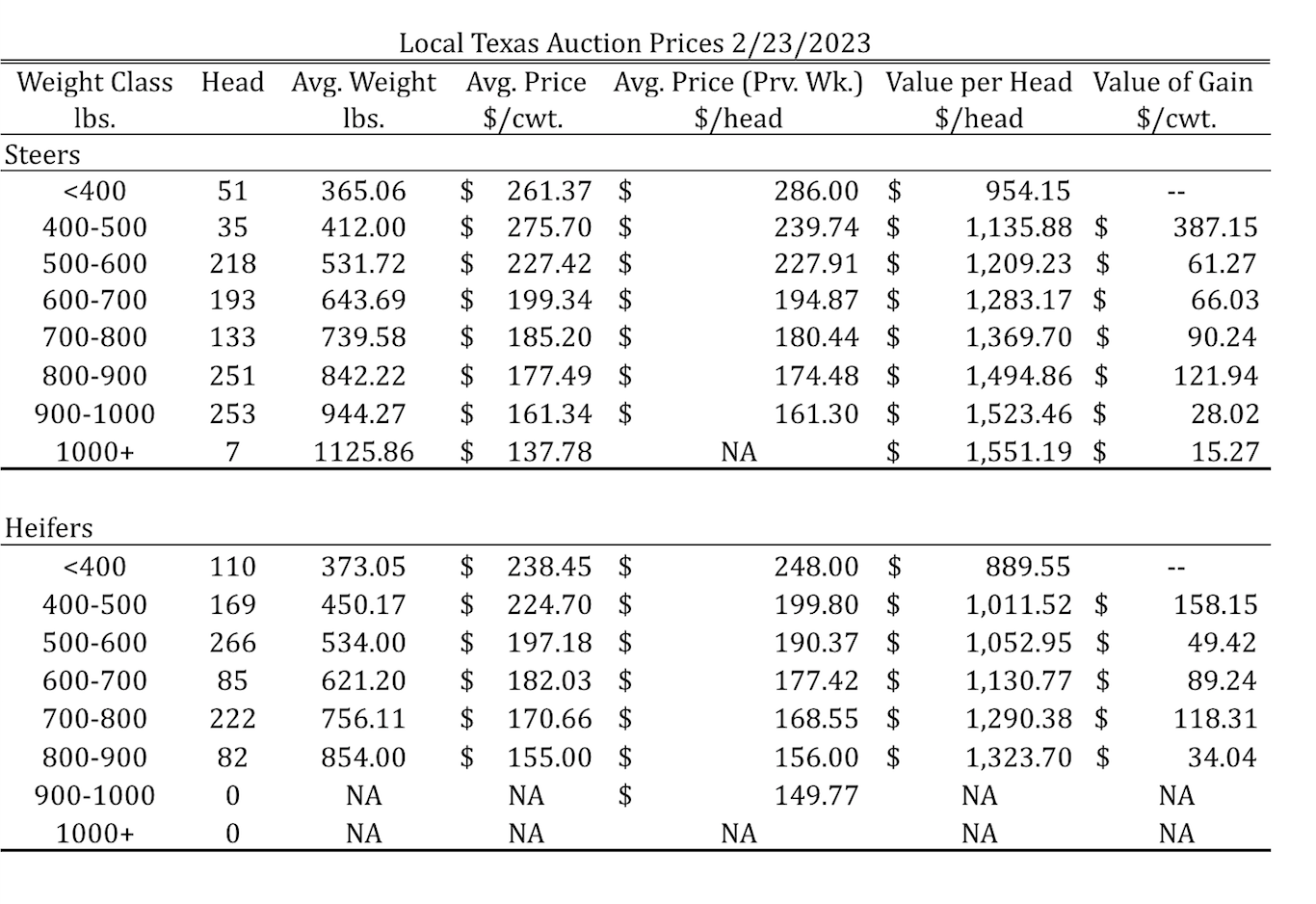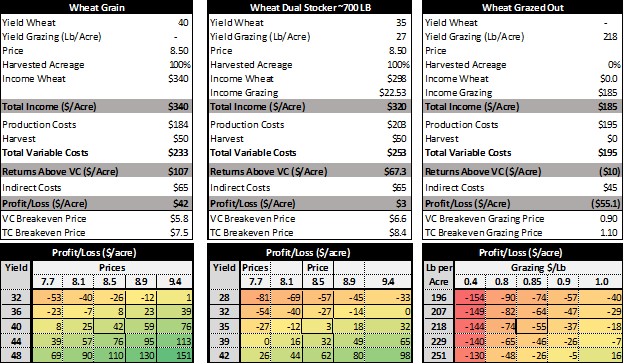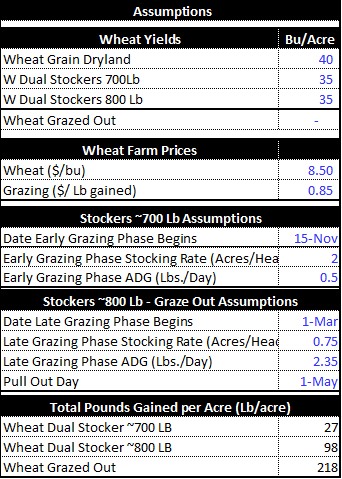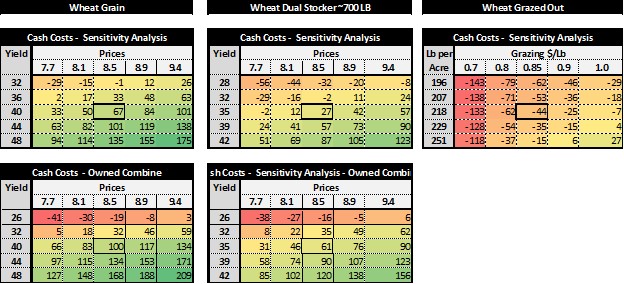 Dryland wheat grain and forage conditions in our area are better than last year but still not the best. The Wheat and Small Grain Decision Aids will help you analyze the best alternative for your wheat fields according to your expected yields, production costs, equipment, and other variables.
Dryland wheat grain and forage conditions in our area are better than last year but still not the best. The Wheat and Small Grain Decision Aids will help you analyze the best alternative for your wheat fields according to your expected yields, production costs, equipment, and other variables.
Board Update 2/27/2023

Tulia, Amarillo, Dalhart Average – Cattle Prices by Category 2/23/2023

Dryland Wheat Alternatives.
Texas dryland wheat conditions in our area have improved compared to last year, especially in these previous months. However, the latest USDA Texas Crop Progress and Condition still mostly ratings wheat conditions as fair and poor. At this time of the year, we will take the time to analyze available alternatives for our wheat according to our expected yield, production costs, rotation, available harvest equipment and cost, insurance, etc. In this comparison, we do not consider the gain or loss of owning the cattle. We compared and assumed the best options from the wheat farmer’s perspective.
The “Wheat and Small Grain Decision Aids” Excel spreadsheet is a great tool to help you in the economic and financial analysis of those decisions. You can download this decision from our District 3 website (https://vernon.tamu.edu/extension-projects/d3-agricultural-economics/ ).
Given today’s dryland wheat conditions, we will use an example to analyze and compare Wheat Grain Harvest vs. Wheat Grazed Out. For these examples, we will use District’s 3 Enterprise Budgets. However, we recommend using your data, costs, and production expectations for the best results. There will probably be differences in costs between our budgets and your expenses. First, input costs differ, considering your purchase timing and purchase power. Second, your costs will vary according to the technology and agronomic practices used in each field. We assumed that we custom-hire harvesting and baling equipment in all these cases.
Wheat Grain Harvest vs. Wheat Grazed Out
Again, this year we have seen high production costs and low forage production during the early grazing season. Most of the time, grazing wheat can be justified from an economic and financial point of view. It increases revenue and reduces income risk. However, the probability of being a profitable decision this year is lower given the high wheat grain prices in the market and the lower forage production. The price per pound of gain might be higher than usual to compensate for those high wheat prices and input costs.
Table 1. Wheat Grain vs. Wheat Grazed Out Profitability
Lower expected yield and lower forage production during the early season will result in lower weight gain for stockers on those pastures. As we can see in the examples, the grazing-out alternative showed the weakest profits in our model when using a grazing price of $0.85 per pound of gain. In this example, we assumed 45 days of grazing, 0.75 acres/head, and an average daily gain of 2.35 lbs. per day (Table 2) but a lower-than-normal gain during the early grazing phase. It would be best to estimate your production assumption that better reflects your field conditions and expectations.
Table 2. Assumptions
The decision aid can also be used to compare these alternatives from the economic (Table 1) and financial points of view (Table 3). In both cases, Wheat Grain Harvest is a better option, even when comparing lower wheat grain prices and higher grazing prices. Pulling out the stockers is still the most profitable decision if we do not consider depreciation or include the cash benefit of owning your harvest equipment.
Table 3. Wheat Grain vs. Wheat Grazed Out Cash Comparison
The Wheat and Small Grain Decision Aids is an economic and financial tool to help farmers make decisions and compare alternatives. Using your data, yield expectations, and costs is essential to analyze these alternatives better. These examples reflect today’s wheat conditions and expectations that might not be precisely the ones on your fields. Don’t hesitate to contact us with questions using this tool.